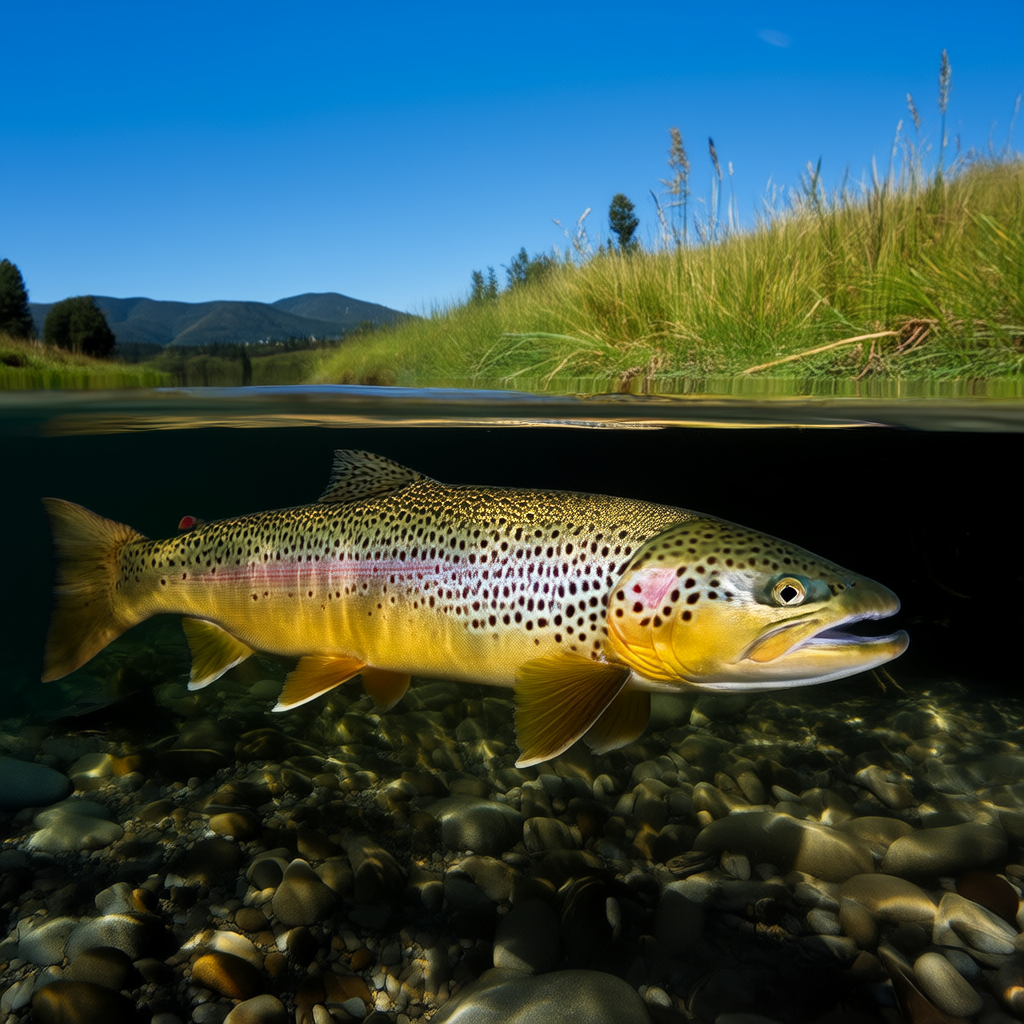Ever wondered what lies below the surface of the sea? The deep sea is a mysterious place that is home to many sea creatures. This includes fish who live at the bottom. These fish have adapted their lives to survive the extreme conditions in the deep ocean where sunlight is scarce, and pressure is high.
Adaptations of Fishes at the Bottom of the Sea
Fish that live in the deep sea have developed many adaptations to survive. One of their most important adaptations is the ability to withstand high pressure in the deep sea. These fish have thick, strong bones and scales to protect themselves from the pressure of the deep sea.
Deep-sea fish have also adapted to be able to see in darkness. These fish have large eyes that are very sensitive to light because sunlight cannot penetrate the depths. Some deep-sea species have bioluminescent organisms that emit their own light. This allows them to communicate and see each other in the darkness.
Deep-sea animals also possess specialized sensory organs, which help them find food and navigate in the dark depths. Many deep-sea species have long, whiskerlike appendages covered with sensitive taste buds. These barbels help fish find food by detecting chemical signals released by their prey.
Deep-sea fish have a remarkable ability to survive cold temperatures. Even in tropical areas, the deep sea can be a frigid place. Deep-sea species have developed a variety of strategies to cope with the cold conditions. These include antifreeze proteins that are found in their blood and prevent ice crystals forming.
The fish that live at the bottom of oceans have found innovative ways to survive. These fish have adapted to the extreme conditions in the deep ocean and found a niche.
Fishes at the bottom of the sea
Many different species of deep-sea fish live there, each one adapted to its own unique environment. Deep-sea species include anglerfishes, gulpereels, and Dragonfish.
Anglerfish is a deep-sea fish that is known for its bioluminescent lure, which grows from the top of their heads. This lure is used by anglerfish in the deep ocean to attract prey, allowing them to ambush their prey and capture it.
The Gulper Eels, or Pelican Eels, is another fascinating deep-sea species of fish. These fish have long snake-like bodies, and their mouths can be opened wide in order to swallow whole prey. Gulper eels feed on a variety of prey that they find in the ocean.
Dragonfish are deep-sea, elongated fish with sharp teeth. These fish have evolved in order to hunt in the deep ocean’s darkness, using their sensitive vision and bioluminescent features.
There are many more fish species that live at the bottom of the ocean in addition to the well-known ones. The deep sea is home a wide variety of fish, from the bizarre and otherworldly, to the surprisingly familiar. They have adapted well to survive in one of the harshest environments on Earth.
Ecology of Fishes at the Bottom of the Sea
The ecology of deep sea fish is a complex web of interconnected relationships that allow these creatures to thrive and survive in their harsh environment. Deep-sea species play a crucial role in the marine food chain, as they are both predators and prey.
As predators, deep sea fish help maintain a healthy ecosystem by regulating the populations of the prey species. These fish are expert hunters who use their specialized adaptations in order to find and capture food deep within the ocean.
Deep-sea animals such as sharks, marine mammal, and larger fish also feed on deep-sea species. The deep sea is an environment where survival depends both on the ability to hunt for food as well as avoid becoming prey for other predators.
Deep-sea fishing is also an important contributor to the carbon cycle. They play a part in the sequestration and removal of carbon dioxide from our atmosphere. When deep-sea fishing dies, their bodies sink down to the ocean floor where they are eaten by other organisms, and eventually decompose. This releases carbon back into the atmosphere.
Overall, the ecology at the bottom of sea is a dynamic and fascinating system that we still do not fully understand. Scientists continue to investigate these deep-sea creatures to uncover the mysteries of their behaviors, adaptations, and ecological roles.
Conservation of Fish at the Bottom of the Sea
Fish that live on the bottom of the ocean face many threats to their existence, despite their importance to the marine eco-system. Human activities like deep-sea mining, trawling and pollution have had a devastating effect on deep-sea fishing populations, leading to a decline in species diversity and abundance.
The destruction of deep-sea fish habitats is one of the biggest conservation challenges. Deep-sea fishing, which involves dragging heavy nets along the ocean floor in order to catch fish, has a devastating effect on deep-sea ecosystems. It can destroy fragile corals as well as other habitats that are important for deep-sea species.
Climate change is a threat to deep-sea fishing, in addition to habitat destruction. Deep-sea fishing is forced to adapt to conditions that are outside their evolutionary limits as ocean temperatures rise and ocean chemistry shifts. This can lead both to a decline in population size and a change in species distribution patterns.
Conservationists are working on establishing marine protected areas where fishing and harmful activities are prohibited or restricted. By creating these protected zones, we can help preserve the unique and delicate ecosystems of deep ocean and ensure that fish living at the bottom of sea continue to survive.
Research and monitoring programs are also part of the conservation efforts for deep sea fish. These programs track population trends and evaluate the effectiveness and efficiency of conservation measures. By studying these fishes and the ecosystems that they inhabit, we will be able to better understand how we can protect and conserve these marine species for future generation.
Conclusion
The world of deep-sea fish is a fascinating, mysterious place. It is filled with wonderful and strange creatures that have adapted in order to survive one of the harshest environments on Earth. These deep-sea creatures, from the bizarre anglerfish and graceful dragonfish to the squirming squid, have adapted to survive in one of the most extreme environments on Earth.
Human activities and environmental changes are putting these fish at risk. It is our responsibility to take action in order to protect and preserve fragile ecosystems in the deep sea, and to ensure the continued existence of fish living at the bottom of sea.
We can help protect the future of these valuable and unique marine species by supporting conservation efforts, promoting sustainability in fishing, and raising public awareness about deep-sea ecologies. Together, we can make sure that the fish below the surface of the ocean continue to fascinate and inspire us in the future.




